
 Image: Adam Patrick Murray / IDG
Image: Adam Patrick Murray / IDG
Hot, hungry chips. People said that of the AMD Ryzen 9 7950X when it launched several weeks ago—and then again when Intel launched its own new flagship desktop CPU, the ferocious Core i9-13900K, which just hit shelves on Thursday.
There’s reason for it. While top-end processors have always drawn more power than the rest of their siblings, their power ratings have quietly and steadily risen in recent years. Today, you’re looking at 253W as the maximum turbo power (TDP) for the 13900K, up from 241W for the Core i9-12900K. Which, for the record, already had some folks murmuring in the stands.
With warmer weather and rising energy costs looming, power draw has become a more important consideration for many CPU buyers. But even if you don’t worry about melting in your home or the size of your electrical bill, there are still interesting nuances in the interplay between the Core i9-13900K’s energy consumption and performance—and how those outcomes stack up against 7950X’s. We dive deep into those details in our YouTube overview, but for the quicker version, read on.
You’ve got the power
A couple of years ago, most people would simply drop a chip into a motherboard and not give much thought to the power draw. Perhaps you’d look at a few charts outlining total system draw, but then you’d file it in the back of your head and go about your life.
But now Intel and AMD’s flagship desktop CPUs are essentially arriving with gigantic factory overclocks—they’re tuned for maximum performance, not energy efficiency. The pipeline is left wide open for as much fuel possible.
If you’re an enthusiast tinkerer, that leaves room for you to power limit the chips for improved efficiency, be it to maintain a cooler home (less electricity consumed means less heat thrown off), keep monthly utility costs down (less electricity consumed also equals fewer kWh to pay for), coax better system temperatures from your build, or because you simply think it’s fun.
That doesn’t mean that the Core i9-13900K or the rival 7950X are sloppily burning electricity in an effort to ramp up performance. On the contrary, these new processors serve up impressive performance-per-watt efficiency compared to their predecessors.

Longer bars indicate better performance.
Longer bars indicate better performance.
Gordon Mah Ung / PCWorld
Longer bars indicate better performance.
Gordon Mah Ung / PCWorld
Gordon Mah Ung / PCWorld
Both Intel and AMD extract a heck of a lot from every watt, as demonstrated by the range of performance these chips show when we manually power limit them to specific wattages. In the case of the Core i9-13900K, it still can outperform its predecessor even when its power limit is significantly dropped. Just look at it when constrained to a maximum of 85W—it still performs about the same as the 12900K at its default max turbo power of 241W.
On Team Red’s side, the Ryzen 9 7950X outperforms the Core i9-13900K when constrained by equal power limitations. In fact, not only does the 7950X at 65W handily beat the 13900K at 65W, but it almost bests the 13900K when the latter is set to 105W.
That’s good info for enthusiasts looking to tinker with their system’s power consumption and temperatures. But is the Core i9-13900K a power hog when you’re running it at stock?
Core i9-13900K power usage in different workloads
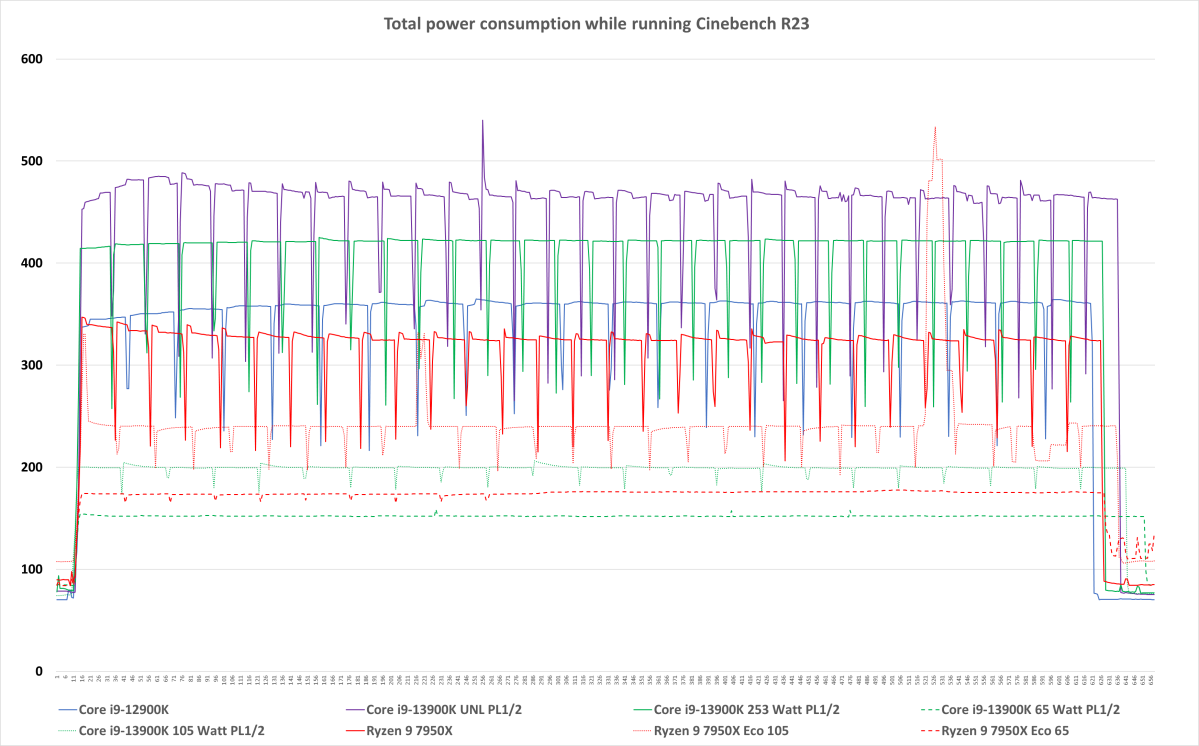
Gordon Mah Ung / PCWorld
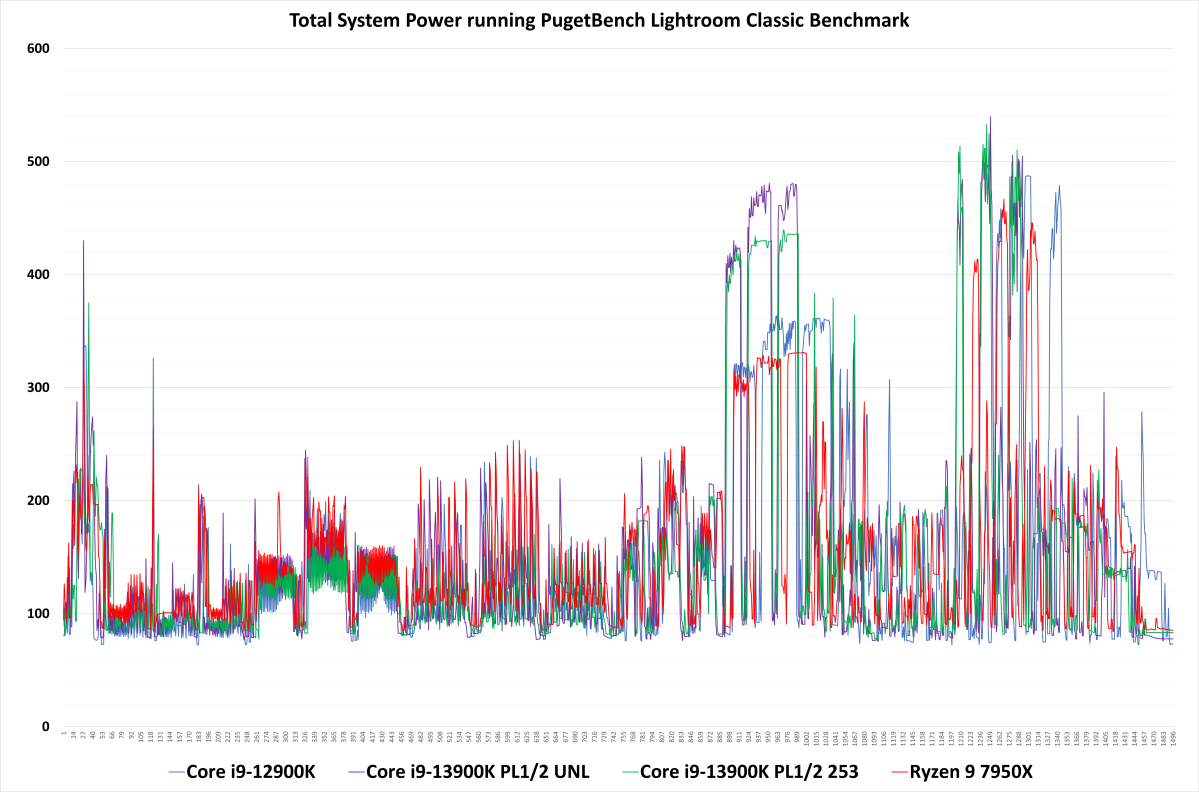
Gordon Mah Ung / PCWorld

Gordon Mah Ung / PCWorld
When you compare the two flagship chips purely on the basis of power consumption (and not how much performance you get while under manually set limitations), calling a winner gets a little more complicated. At stock settings, the Core i9-13900K typically consumes less power in single-threaded tasks, while the Ryzen 9 7950X pulls significantly less electricity during multithreaded tasks. In lightly threaded tasks, like Adobe Lightroom or the two games we tested, it’s more of a tie.
The fun part is how much energy the chips draw when power limited. Notch down the Core i9-13900K to 105W or 65W, and it goes lighter on power consumption than the 7950X with the same limits. It may get outperformed by the 7950X at those TDPs, but you won’t be paying extra in electricity costs.

Gordon Mah Ung / PCWorld
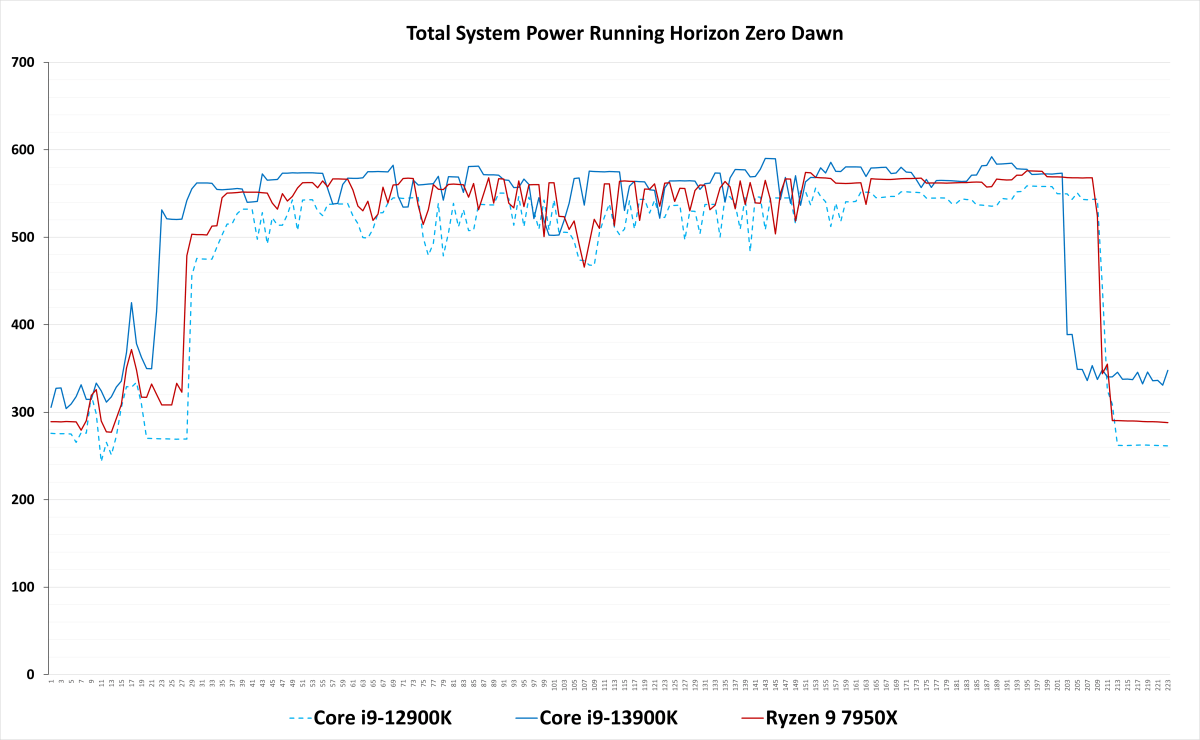
Gordon Mah Ung / PCWorld
The takeaway from this? A little elbow grease can help you find your sweet spot for maximizing eye-popping performance while minimizing the hit to your monthly bills. We demonstrated the effects of power limiting here, but you should be able to achieve similar results via undervolting or even temperature limiting as well. And you’ll always still have a reserve of extra performance in the tank if you want to let your chip run wild and free.
But no one will be buying the Core i9-13900K (or the 7950X) solely on the basis of power efficiency and power draw. The more appealing chip will depend on your energy concerns relative to your performance needs—and for most folks, the face-melting speed of Intel’s best chip will be well worth the cost of keeping it running at stock.
Core i9-13900K
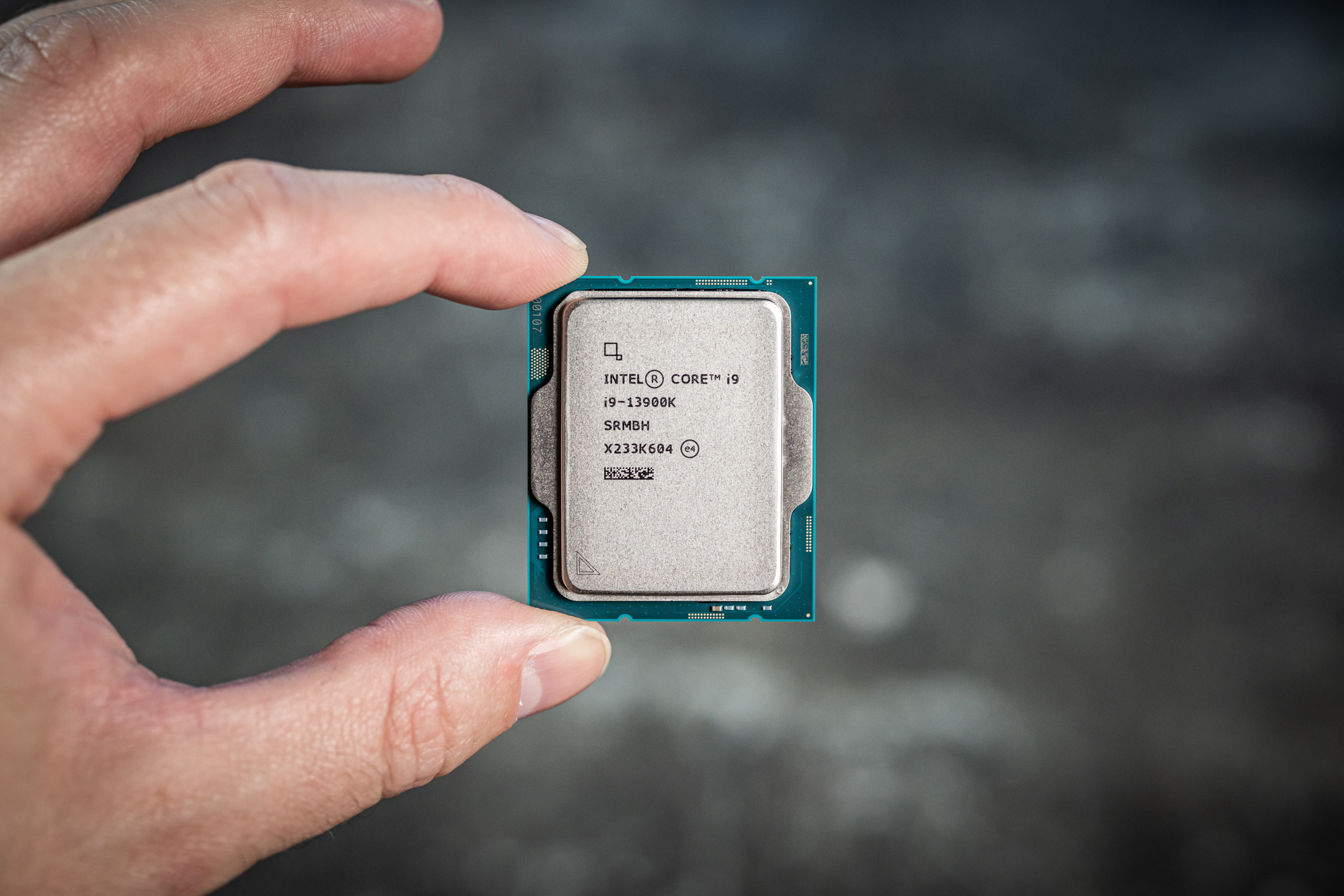 Price When Reviewed:$659.99Best Prices Today:$659.99 at Antonline | $659.99 at B&H Photo | $659.99 at Newegg
Price When Reviewed:$659.99Best Prices Today:$659.99 at Antonline | $659.99 at B&H Photo | $659.99 at Newegg
AMD Ryzen 9 7950X
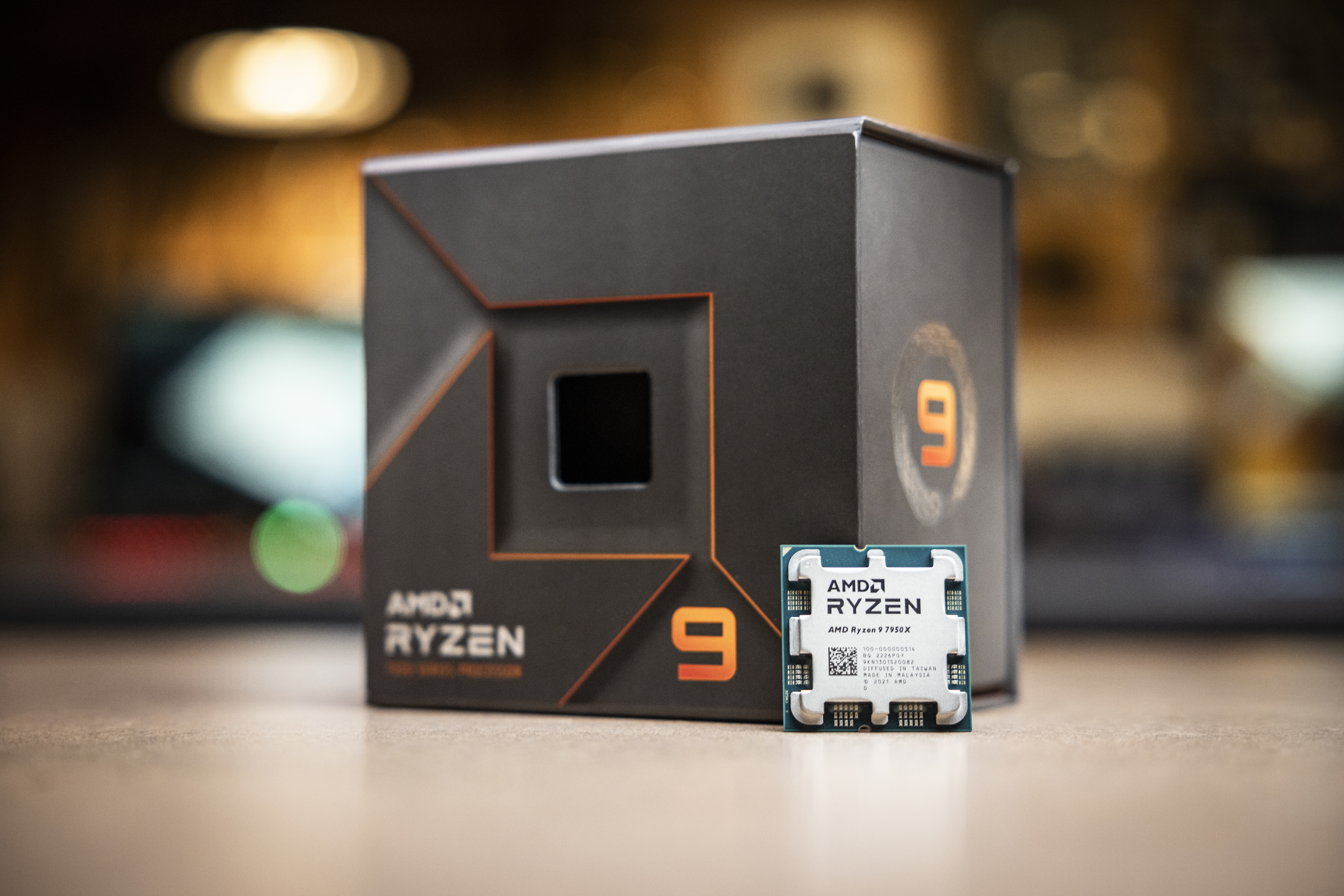 Price When Reviewed:$699Best Prices Today:$545.59 at Amazon | $549.99 at Best Buy | $699 at Antonline
Price When Reviewed:$699Best Prices Today:$545.59 at Amazon | $549.99 at Best Buy | $699 at Antonline
Author: Alaina Yee, Senior Editor

Alaina Yee is PCWorld’s resident bargain hunter—when she’s not covering software, PC building, and more, she’s scouring for the best tech deals. Previously her work has appeared in PC Gamer, IGN, Maximum PC, and Official Xbox Magazine. You can find her on Twitter at @morphingball.
Recent stories by Alaina Yee:
Apple’s unfixable CPU exploit: 3 practical security takeawaysIntel Core i7-14700K and Core i9-14900K review: More features, mild speed bumpThe best CPUs for gaming 2023: Top picks in all price categories




